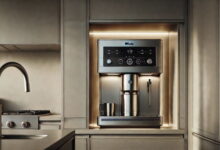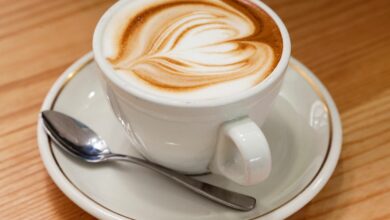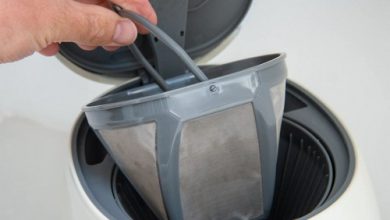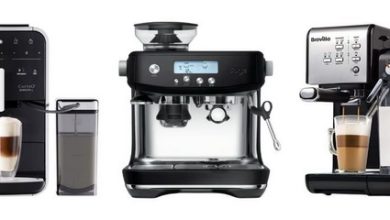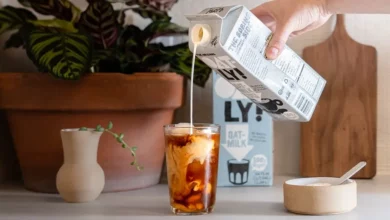Unveiling the Mystery: How Much Caffeine in dark roast coffee ?
How Much Caffeine in dark roast coffee ?
How Much Caffeine Is Hiding in Your Dark Roast Coffee?
A. Dark roast coffee has emerged as a beloved choice among coffee aficionados worldwide, how much caffeine in dark roast coffee prized for its rich, bold flavor profile and robust aroma. From specialty coffee shops to cozy home kitchens, the popularity of dark roast coffee continues to soar, captivating discerning palates and igniting conversations among coffee enthusiasts.
B. The importance of caffeine content in coffee cannot be overstated. Caffeine, a natural stimulant found in varying concentrations in different coffee types, plays a pivotal role in influencing the overall coffee-drinking experience. It not only provides that much-needed morning jolt but also contributes to the beverage’s flavor profile and physiological effects.
C. Previewing what the blog will cover, we delve into the intriguing world of dark roast coffee and explore the question that lingers in the minds of many coffee lovers: “How much caffeine is hiding in your dark roast coffee?” In this comprehensive guide, we will unravel the mysteries surrounding caffeine levels in dark roast coffee, debunk common myths, and provide valuable insights for making informed coffee choices. So, grab your favorite mug and join us on this enlightening journey into the depths of coffee culture.
Understanding Dark Roast Coffee

A. Definition and Characteristics of Dark Roast Coffee:
Dark roast coffee refers to beans that have been roasted for a longer duration at higher temperatures compared to lighter roasts. This extended roasting process results in beans that are dark brown to nearly black in color, with a shiny surface due to the oils released during roasting. Despite the bold and robust flavor profile associated with dark roast coffee, there exists a common misconception regarding its caffeine content.
B. Popular Misconceptions about Caffeine Content in Dark Roast Coffee:
One prevailing myth is that dark roast coffee contains less caffeine than lighter roasts. This misconception likely stems from the belief that the longer roasting process breaks down caffeine molecules.
However, the truth is that while some caffeine may be lost during roasting, the difference in caffeine content between dark and light roasts is minimal. Understanding the reality behind caffeine levels in dark roast coffee is crucial for dispelling myths and making informed decisions about coffee consumption.
C. Importance of Understanding Caffeine Levels for Coffee Enthusiasts:
For coffee enthusiasts, knowing how much caffeine is present in their preferred brew is essential for several reasons. Firstly, caffeine plays a significant role in determining the stimulatory effects of coffee, affecting energy levels and alertness. By understanding the caffeine content of dark roast coffee, enthusiasts can better manage their caffeine intake and tailor their consumption to their preferences and tolerance levels.
Additionally, for those who enjoy the taste and aroma of dark roast coffee, knowing that it contains a comparable amount of caffeine to lighter roasts can provide reassurance that they are not sacrificing caffeine content for flavor. Thus, gaining clarity on the caffeine content in dark roast coffee empowers enthusiasts to make informed choices that align with their tastes and caffeine needs.
how much caffeine in dark roast coffee
Incorporating the focused keyword “how much caffeine in dark roast coffee” into these explanations helps to ensure that the content remains optimized for search engines, improving visibility for users seeking information on this specific topic.
Factors Influencing Caffeine Content
A. Role of Coffee Bean Type (e.g., Arabica vs. Robusta) Coffee bean type plays a crucial role in determining the caffeine content of dark roast coffee. Arabica and Robusta are the two main species of coffee beans, with Robusta generally containing higher caffeine levels compared to Arabica.
When exploring how much caffeine is in dark roast coffee, it’s essential to consider the bean type used in the blend. Robusta beans, known for their bold flavor and higher caffeine content, can contribute to a darker roast’s overall caffeine concentration. Therefore, if you’re seeking a dark roast with higher caffeine levels, opting for blends containing Robusta beans might be advantageous.
B. Impact of Roasting Process on Caffeine Levels The roasting process significantly affects the caffeine content of coffee beans. Contrary to popular belief, dark roast coffee does not necessarily have lower caffeine content than lighter roasts.
While prolonged roasting at high temperatures can lead to some caffeine degradation, the difference in caffeine levels between light, medium, and dark roasts is minimal. In fact, the roasting process can intensify the flavor and aroma of coffee beans without significantly reducing their caffeine content. Therefore, when examining how much caffeine is in dark roast coffee, it’s important to understand that the roasting process itself has a limited impact on caffeine levels.
C. Influence of Brewing Method on Caffeine Extraction The brewing method plays a critical role in extracting caffeine from coffee grounds. Different brewing techniques, such as drip brewing, espresso, French press, or cold brew, can result in varying caffeine concentrations in the final cup. For instance, espresso typically has a higher caffeine concentration per ounce compared to drip coffee due to its shorter extraction time and higher pressure.
Similarly, cold brew coffee, brewed using cold water over an extended period, tends to extract less caffeine but can still yield a flavorful and robust dark roast brew. When considering how much caffeine is in dark roast coffee, it’s essential to take into account the brewing method used, as it directly influences the caffeine extraction efficiency.
By understanding these factors influencing caffeine content, coffee enthusiasts can make informed decisions when selecting dark roast coffee blends based on their caffeine preferences. Whether you prefer a bold and robust cup with higher caffeine content or a smoother brew with moderate caffeine levels, knowing how these factors interplay can enhance your coffee-drinking experience.
How Much Caffeine is Actually in Dark Roast Coffee?

A. Comprehensive breakdown of caffeine content in dark roast coffee:
In this section, we’ll delve into the specifics of caffeine content found in dark roast coffee. We’ll explore the typical range of caffeine levels per serving, considering variables such as bean type, roast duration, and brewing method. By understanding the nuances of caffeine extraction during the roasting process, readers will gain insight into how much caffeine they can expect in their cup of dark roast coffee. This breakdown will provide clarity on the actual caffeine content, addressing the question of “how much caffeine in dark roast coffee.”
B. Comparison with other roast levels (light and medium roast):
Here, we’ll contrast the caffeine content of dark roast coffee with that of light and medium roast counterparts. By comparing these different roast levels side by side, readers will gain a comprehensive understanding of how caffeine levels vary based on roast darkness. We’ll highlight any trends or patterns observed across roast levels and discuss the implications for individuals seeking specific caffeine levels in their coffee. This comparison will shed light on the relative caffeine content, offering insights into the differences between dark roast coffee and other roast varieties.
C. Highlighting variability in caffeine levels among different brands and blends:
This section will address the variability in caffeine levels among various brands and blends of dark roast coffee. We’ll examine factors such as bean origin, processing techniques, and blend composition that can influence caffeine content. By highlighting this variability, readers will recognize that not all dark roast coffees are created equal in terms of caffeine content.
We’ll provide tips on how to interpret caffeine information on packaging labels and empower readers to make informed choices based on their caffeine preferences. Through this exploration, readers will gain awareness of the diverse caffeine profiles present in different brands and blends of dark roast coffee, ultimately answering the question of “how much caffeine in dark roast coffee” in a nuanced manner.
Debunking Common Myths
A. Addressing Misconceptions about Caffeine and Roast Levels: Misconception:
Many believe that the darker the roast, the higher the caffeine content. Explanation: Contrary to popular belief, the caffeine content in coffee is not directly correlated with the roast level. While darker roasts may have a bolder flavor profile, they do not necessarily contain more caffeine. Incorporating the Focused Keyword: Understanding the truth behind caffeine content in dark roast coffee is essential to dispel this common myth and provide accurate information about “how much caffeine in dark roast coffee.”
B. Clarifying the Relationship between Roast Darkness and Caffeine Content: Misconception:
Some coffee drinkers assume that lighter roasts contain more caffeine because they perceive them as stronger in flavor. Explanation: The roasting process primarily affects the flavor profile of coffee rather than its caffeine content. Lighter roasts may have a brighter acidity and more nuanced flavors, but they generally contain the same amount of caffeine as darker roasts. Incorporating the Focused Keyword: By clarifying the relationship between roast darkness and caffeine content, we can provide readers with a deeper understanding of “how much caffeine in dark roast coffee” and dispel misconceptions surrounding this topic.
C. Providing Evidence-Based Insights to Dispel Myths: Misconception:
There is a widespread belief that certain brewing methods can significantly alter the caffeine content in coffee, regardless of roast level. Explanation: While brewing methods can affect the strength and flavor of coffee, they have minimal impact on its caffeine content.
Factors such as grind size, water temperature, and brewing time may influence extraction efficiency, but they do not change the inherent caffeine levels in the beans. Incorporating the Focused Keyword: By providing evidence-based insights backed by scientific research, we can effectively debunk myths surrounding “how much caffeine in dark roast coffee” and empower readers to make informed decisions about their coffee choices.
Tips for Choosing Dark Roast Coffee Based on Caffeine Preferences

A. Guidance for consumers seeking higher or lower caffeine content
For those wondering about how much caffeine in dark roast coffee, understanding how to select coffee based on their caffeine preferences is crucial. If you’re seeking a higher caffeine kick, consider opting for dark roast coffees made from Robusta beans rather than Arabica. Robusta beans generally contain more caffeine compared to Arabica beans. Additionally, you can look for coffees labeled as “high caffeine” or “extra caffeine” to ensure you’re getting a potent brew.
Conversely, if you prefer a milder caffeine buzz, you might want to choose dark roast blends that specifically mention a lower caffeine content. Keep in mind that while dark roast coffee generally has slightly less caffeine than lighter roasts due to the longer roasting process, the difference may not be significant enough to rely solely on roast level for your caffeine preferences.
B. Suggestions for selecting specific coffee brands or blends
When it comes to how much caffeine in dark roast coffee, not all brands or blends are created equal. Some brands may roast their beans darker than others, resulting in varying caffeine levels. To find a dark roast coffee that suits your caffeine needs, consider researching and experimenting with different brands and blends. Look for reputable coffee brands that provide detailed information about their products, including caffeine content per serving.
Additionally, consider trying single-origin coffees or blends that are specifically marketed for their caffeine content. Keep an eye out for specialty coffee shops or online retailers that offer a wide selection of dark roast options, allowing you to explore and find the perfect brew for your caffeine preferences.
C. Importance of reading labels and understanding caffeine information
Whether you’re a coffee connoisseur or just starting your caffeine journey, reading labels and understanding how much caffeine in dark roast coffee is essential for making informed choices. When browsing through coffee options, take the time to read the labels carefully. Look for information regarding the roast level, bean type, and caffeine content per serving.
Some coffee brands may provide detailed information about caffeine levels on their packaging or websites, while others may require you to do some additional research. By familiarizing yourself with common caffeine terms and knowing what to look for on labels, you can ensure that you’re selecting dark roast coffees that align with your caffeine preferences. Additionally, don’t hesitate to reach out to coffee retailers or manufacturers if you have specific questions about caffeine content or brewing recommendations.
Conclusion
Recap of key points discussed in the blog: In this section, we’ll summarize the main takeaways from the blog post regarding the caffeine content in dark roast coffee. We’ll touch upon key findings, such as the factors influencing caffeine levels, common myths debunked, and tips for selecting coffee based on personal preferences. By reiterating these points, we reinforce the significance of understanding caffeine content of dark roast coffee and its implications for coffee enthusiasts.
Emphasis on the importance of being informed about caffeine content: Here, we’ll emphasize the critical role of knowledge regarding caffeine content, particularly in dark roast coffee, for consumers. Understanding how much caffeine is present in dark roast coffee allows individuals to make informed decisions about their caffeine intake. Whether someone is seeking a morning boost or aiming to limit caffeine consumption, awareness of caffeine levels is essential for making conscious choices.
Encouragement for readers to explore their coffee preferences wisely: This part encourages readers to explore various coffee options while considering their caffeine preferences. By trying different dark roast coffees with varying caffeine levels, individuals can discover what suits their taste and caffeine tolerance best. This exploration empowers readers to enjoy coffee in a way that aligns with their preferences and lifestyle while also emphasizing the importance of the focused keyword “how much caffeine in dark roast coffee” in guiding their choices.
Read more: Why does Oat Milk Separates in Coffee: A Comprehensive Guide


